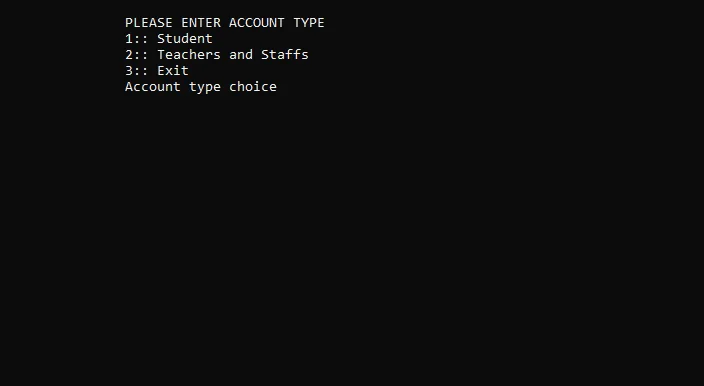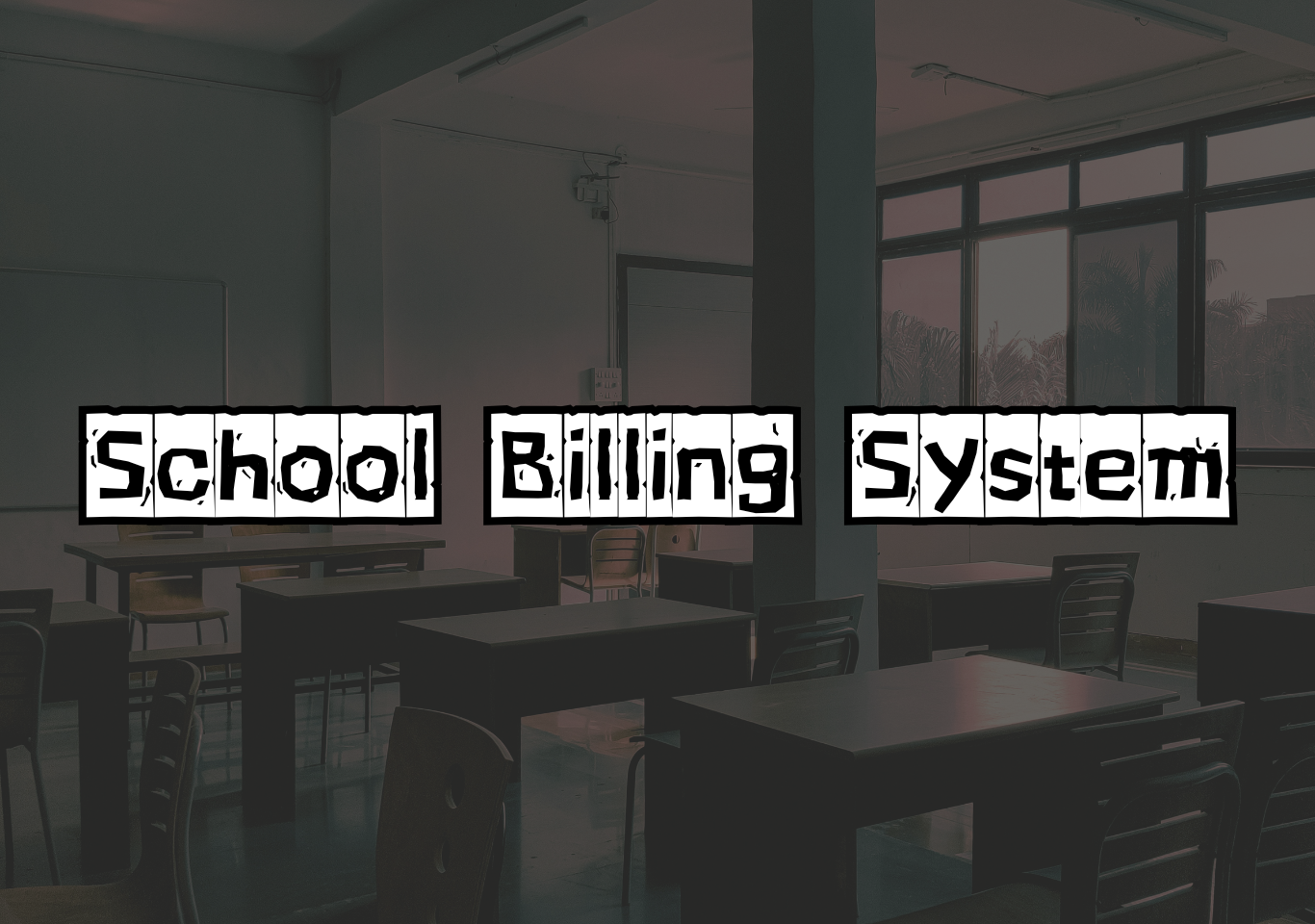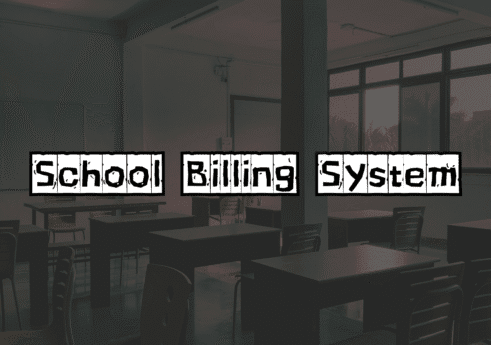Introductionc
A school billing system is a financial management application that automates the process of handling student fees, payments, and receipts for educational institutions. It is a C programming-based project.
The school billing system is the backbone of every educational financial operations. This system handles the charging, tracking, and reconciliation of student fees, staff salaries, miscellaneous charges, payments, and outstanding balances. A well-designed billing system reduces manual effort, minimizes errors, and provides real-time visibility into cash flow and obligations based on the data entered. It also helps administrators generate financial reports, manage staff payroll, and monitor outstanding balances in real time.
In traditional schools, billing is often done manually, leading to errors, data loss, and time inefficiency. A digital billing system eliminates these issues by using structured databases and automated calculations. It can send reminders for unpaid fees, apply discounts, and maintain a secure transaction history. This improves cash flow, accountability, and decision-making across departments.
Although it has a command-line interface, it is very easy to use and implement. Building such a system in C offers low-level control, efficiency, and simplicity for embedded or desktop deployments, making it suitable for small to medium-sized schools. This type of project is very useful in learning C programming. A reliable billing system not only simplifies fee collection but also enhances transparency between schools, parents, and financial departments, creating a smooth, error-free educational experience.

Building the project
When you run the school billing project, a welcome message appears on the screen, and you can press any key to begin. The School Billing System manages all financial and administrative activities within a school. After starting, you’ll see three main menus that allow you to log in either as a student or a teacher. Each user type has its own features and access options.
To log in to the school billing system, you must enter the current month and date. As a student, you can add payment records for any given month, search for records, modify or delete existing data, and calculate your total fee. The “Calculate Fee” option computes the total amount based on the details you provide. As a teacher, the system follows a similar structure. Teachers can add, search, modify, and delete their records, as well as calculate their salaries. When creating a record, teachers must enter details such as name, ID, date, salary, and teaching shift. The system allows salary computation based on the entered data, ensuring quick and organized record keeping.
At any point, both students and teachers can exit the system. Upon exit, a short animation is displayed, giving the project a more polished feel. The program is user-friendly, well-structured, and easy to understand. All records—whether student payments or teacher salary data—are stored securely in a .txt file, ensuring data persistence between sessions. For executing this project, it is highly recommended to use the Dev-C++ compiler and editor. It simplifies both compilation and execution, provides clear error reporting, and is well-suited for C programming projects.
Purpose of this project
- Tuition and Fee Management
- Student Account Management
- Payment Processing & Reconciliation
- Staff Salary & Payroll
- Reporting & Auditing
- User Roles & Security
- Data Persistence & Backup
Benefits and Drawbacks
Benefits
- Automating invoice generation and reconciliation saves staff time and reduces manual effort.
- Automated calculations eliminate human mistakes in fee, deduction, and penalty computation.
- Timely billing and payment tracking improve revenue consistency and financial forecasting.
- Real-time access to reports allows parents, administrators, and auditors to monitor transactions easily.
- Automation minimizes expenses on paper, printing, and manual reconciliation tasks.
- A modular C-based structure enables easy system updates and integration with larger management solutions.
Drawbacks
- File corruption & data loss if storage isn’t robust or backups fail.
- Insecure storage or weak authentication may lead to data leaks.
- For very large student bodies, flat-file C systems may strain.
- Raw C lacks built-in libraries; maintaining modules over time is an effort.
- Schools often change billing policies; the system must be adaptable.
How to use this project?
- Download and extract the source code.
- Open the project folder in the code editor.
- Dev C++ Recommended.
- Compile and execute the project.
- Use the school billing system.
Click the button below to download the complete School Billing System source code and start exploring how it works today.


